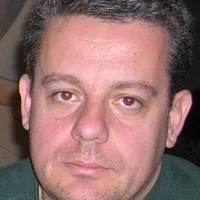Recent Advances in Electrical System Discharges
A special issue of Machines (ISSN 2075-1702). This special issue belongs to the section "Electromechanical Energy Conversion Systems".
Deadline for manuscript submissions: closed (31 October 2023) | Viewed by 417
Special Issue Editors
Interests: high voltage; electrical insulation; partial discharges; vacuum insulation; smart grid; power transmission system; microgrids; multiphysics modeling; data science; optimization
Interests: electrical machines and drives; diagnostics of electrical machines; renewable energies and smart grids
Special Issues, Collections and Topics in MDPI journals
Special Issue Information
Dear Colleagues,
An electric discharge is the flow of electricity through a medium, often caused by the movement of charged particles, usually in response to an external electric field. Some electrical discharges have useful applications, such as those used in medical treatments, lighting systems, and welding technologies. On the other hand, some discharges cause partial and/or global breakdown of the operating media, resulting in disruption or damage to the equipment.
The study of disruptive electrical discharges dates back to the early 20th century, when John Townsend developed the theory of ionization-based electrical rupture of gaseous media. Later, scientists continued to show their curiosity in new territories, including but not limited to the breakdown of solids and liquids, vacuum flashovers, corona discharges, and internal and surface partial discharges. While some believe that research on electrical discharges has stagnated at the beginning of the 21st century, new challenges such as transportation electrification, high-frequency voltage stress (by wide bandgap-based converters), nanodielectrics, and field grading materials have not only proved them wrong, but reinvigorated the field.
This Special Issue focuses on research exploring the modern challenges posed by electrical discharges. These challenges include those in electric aircraft, modern rotating machines, superconducting systems, sustainable energy resources, and many more. Additionally, we welcome submissions that use multiphysics modeling, artificial intelligence, and analytical approaches to deepen our understanding of partial or global electrical discharges.
The proposed Special Issue particularly fits into the following scopes of MDPI’s Machines Journal:
- Systems and control engineering;
- Electronic engineering;
- Machine diagnostics and prognostics (condition monitoring);
- Machine design;
- Applications of automation.
Dr. Moein Borghei
Dr. Athanasios Karlis
Guest Editors
Manuscript Submission Information
Manuscripts should be submitted online at www.mdpi.com by registering and logging in to this website. Once you are registered, click here to go to the submission form. Manuscripts can be submitted until the deadline. All submissions that pass pre-check are peer-reviewed. Accepted papers will be published continuously in the journal (as soon as accepted) and will be listed together on the special issue website. Research articles, review articles as well as short communications are invited. For planned papers, a title and short abstract (about 100 words) can be sent to the Editorial Office for announcement on this website.
Submitted manuscripts should not have been published previously, nor be under consideration for publication elsewhere (except conference proceedings papers). All manuscripts are thoroughly refereed through a single-blind peer-review process. A guide for authors and other relevant information for submission of manuscripts is available on the Instructions for Authors page. Machines is an international peer-reviewed open access monthly journal published by MDPI.
Please visit the Instructions for Authors page before submitting a manuscript. The Article Processing Charge (APC) for publication in this open access journal is 2400 CHF (Swiss Francs). Submitted papers should be well formatted and use good English. Authors may use MDPI's English editing service prior to publication or during author revisions.
Keywords
- condition monitoring
- corona discharges
- dielectric breakdown
- electrical discharges
- high voltage engineering
- machine learning
- electric aircraft
- multiphysics modeling
- nanodielectrics
- partial discharges
- wide-bandgap semiconductors






